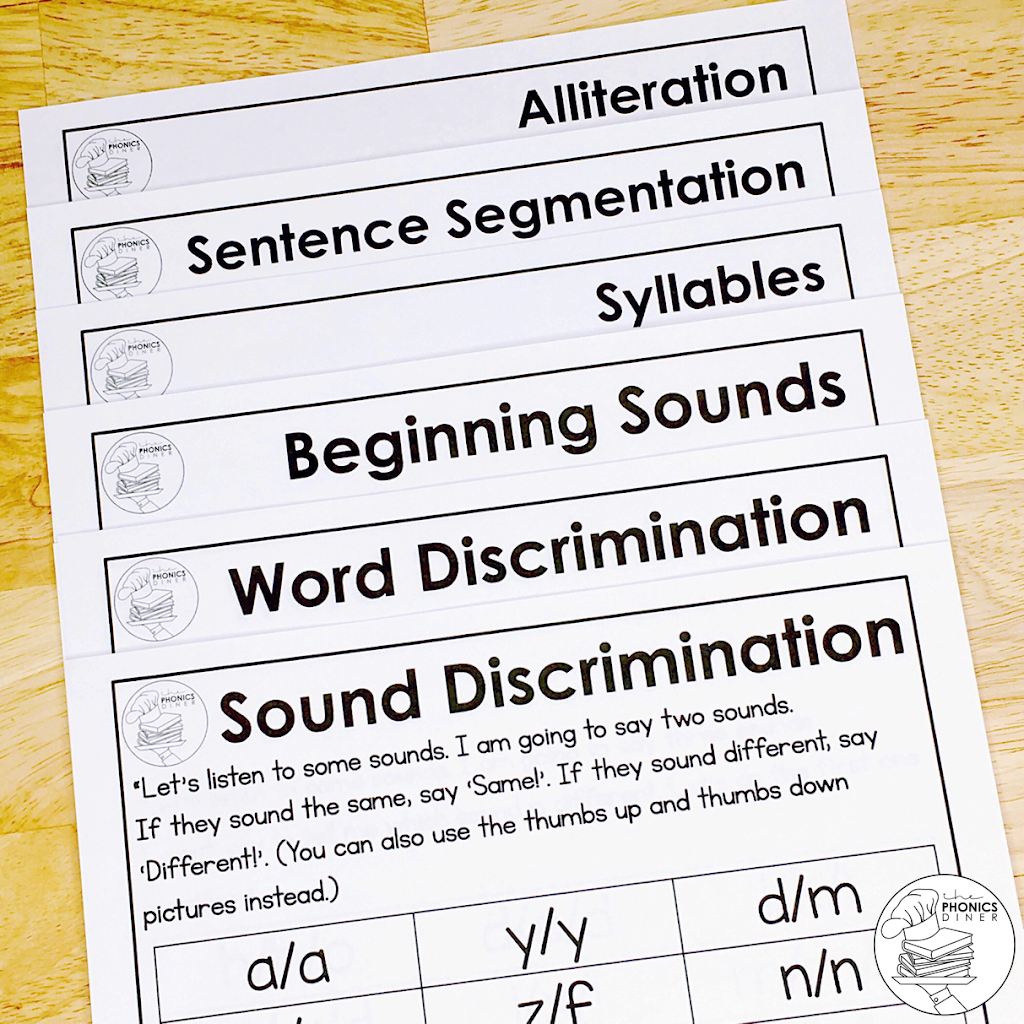
What is phonemic awareness and how does it transform reading? It is the most important ingredient in the reading recipe, but it seems to be forgotten at times. Phonemic awareness falls under the umbrella of phonological awareness, which is an awareness of every level in the sound structures of our language.
What is Phonemic Awareness?
Phonemic awareness is all about the spoken sound, or the phoneme, which is the smallest unit of the language. It is an understanding of the structure of the language. This includes knowing that the language is made up of words and in turn, words are made up of parts that we call syllables in addition to rhymes and other sounds. Before a student is able to understand written language, they must have an understanding of the spoken language.

The simplest explanation is this……phonemic awareness gets the ears ready for what the eyes are about to see. This is so true because if the ears are not ready, it does not matter what you put before a student. It will be a foreign concept to them.
Why is Phonemic Awareness Important?
Phonemic awareness is important because although children can know their letters and sounds, if they are unable to understand and manipulate sounds, then they won’t be able to do anything with them. They will be unable to hear the parts of a word, nor will they be able to blend a word together.
Research has shown that the best predictors of student’s reading success lie with their ability to grasp phonemic awareness. When students arrive at school and their phonological awareness is well-developed, then the probability of their success in making sense of how letters and sounds work in print is high. It is necessary for students to be able to effectively use letter-sound correspondence when it comes to reading and writing.

Phonemic Awareness in Whole Group
There are many moments where we can add phonemic awareness throughout our day. You can definitely bring in phonemic awareness elements into your whole group time. I like to do this during our read-aloud time. This is not a time to be very specific, as the children in your classroom will likely have diverse needs. I use this time to introduce new concepts, and kind of see where my students are in general. It’s also good practice to incorporate phonemic awareness activities into your daily reading time.

It is necessary to provide opportunities for children to develop their ear for language. Find all of the stories that contain rhyming words and alliterations! As adults, we can be over these types of books quickly, but they are a goldmine for students who are learning to listen inside of a word!
Include poems and silly songs as well. The good thing about poems and songs is that you can put them on charts. Now yes, adding a visual brings in phonics, but for your students who are ready, the visual aid is a good thing.
Phonemic Awareness in Small Group
Small group is where the magic happens! This is where you get the biggest bang for your buck. I begin each small group with about 5 minutes of phonemic awareness. Now for my students who have none, we spend more time on it. At the beginning of the year, we focus on it a lot, because knowing where my students are helps me to know who is ready to begin phonics. The easiest place to begin is simple and quick phonemic awareness routines. It gives me a fast snapshot of where each student is.

It’s so important that you don’t go too fast. I know that pacing guides and the powers that be seem to always rush students, but building up phonemic awareness in a student is just like building a house. If the foundation isn’t right, eventually the house will begin to crumble and it will be an unstable structure.

To switch it up a bit, I begin to add in picture supports. I find that it helps students who struggle because although they may not get all of the answers right, it gives them a bit of a confidence boost that they can identify the pictures correctly. Once again, if you find that initially, you are spending most of your small group on phonemic awareness, it is ok! They will make progress, and you will naturally see a path forward to begin your phonics instruction.

At this point, the picture supports begin to include the letters that we are working on. It is during this time that they truly begin to understand how the letters and sounds work are connected. At this point, you will begin more of a traditional small group, and you will find that your groups become more and more differentiated.

Phonemic awareness is the foundation of reading. If you have students who are struggling, go back and check their level of phonemic awareness. I guarantee that it is an area that they are weak in, and therefore it is affecting their reading ability! By building up their ear to “hear”, their reading will greatly improve!
Pin for later!












